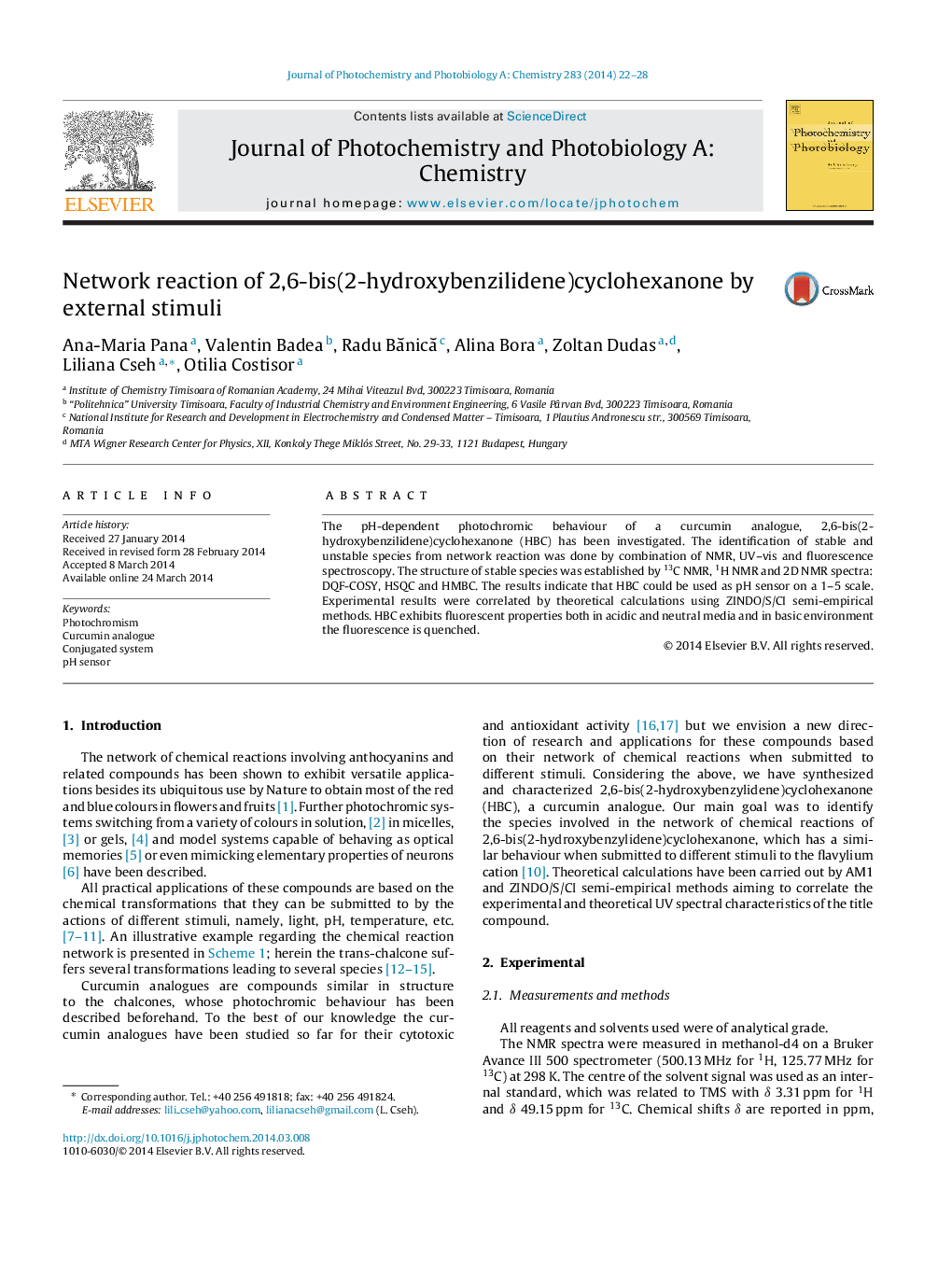| Article ID | Journal | Published Year | Pages | File Type |
|---|---|---|---|---|
| 26608 | Journal of Photochemistry and Photobiology A: Chemistry | 2014 | 7 Pages |
•pH-dependent photochromic behaviour of a curcumin analogue, 2,6-bis(2-hydroxybenzilidene)cyclohexanone (HBC).•Stable species identification on pH ranges.•pH sensor behaviour of HBC.•Theoretical calculations vs. experimental data.•Fluorescent properties.
The pH-dependent photochromic behaviour of a curcumin analogue, 2,6-bis(2-hydroxybenzilidene)cyclohexanone (HBC) has been investigated. The identification of stable and unstable species from network reaction was done by combination of NMR, UV–vis and fluorescence spectroscopy. The structure of stable species was established by 13C NMR, 1H NMR and 2D NMR spectra: DQF-COSY, HSQC and HMBC. The results indicate that HBC could be used as pH sensor on a 1–5 scale. Experimental results were correlated by theoretical calculations using ZINDO/S/CI semi-empirical methods. HBC exhibits fluorescent properties both in acidic and neutral media and in basic environment the fluorescence is quenched.
Graphical abstractFigure optionsDownload full-size imageDownload as PowerPoint slide
